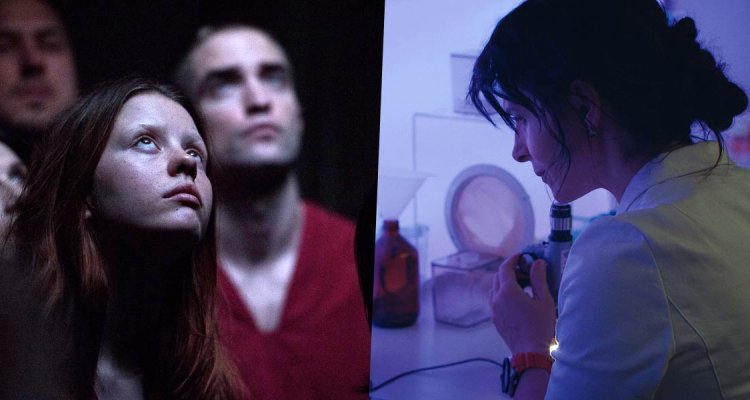Note: This article has spoiler-ish elements in the last graph.
For most directors, space is a blank canvas, an empty screen on which any variety of human potential can be projected. “Star Wars” and “Star Trek” both portrayed the cosmos as infinitely diverse playgrounds of ideas and cultures while in “2001,” Kubrick used space as the setting of the next stage of human evolution. Even depictions of actual space travel in recent history, like “Apollo 11” or “The Right Stuff” were deeply invested in the idea of space exploration as a pinnacle of human achievement, an expression of humanity’s noblest impulses enabled by astronauts culled from our best and brightest, with a little cowboy spirit thrown in. But anyone who expected director Claire Denis to adhere to these niceties has not been paying attention to her career. “High Life,” her own foray into the great beyond, may be the most philosophically earthbound film to ever be set in space. Like other space films, her astronauts can be considered an expression of the society that sent them, but “High Life” is not showing our loftiest aspirations, but rather the bleakest realities of the human experience.
READ MORE: New York Film Festival: 15 Must-See Films To Watch
To begin with, Denis’ astronauts are the lowest of the low, literal prisoners tricked into a mission from which they’ll never return. This is a striking change in context, to take astronauts out of the mythic realm of cowboys and knights and into the more depressing reality of the labor market where space flight is one more kind of brutal and dehumanizing labor in which a lack of rights and disposability are features, not bugs. For these men and women, space flight is not a deliverance from prison, but a lifelong extension of it. The production design of “High Life” drives this point home at every opportunity, from the boxy, utilitarian outer shape of the spacecraft to the central interior hallway that Denis says she had modeled after a cellblock. Unlike a regular prison, there are no guards, but only because of the depressing fact that escape is literally impossible; the state controls them remotely via computer regulated life support systems.
READ MORE: 55 Must-See Films: The 2018 Fall Movie Preview
All of the similarities to literal prisons gesture toward a more abstract idea – humanity imprisoned by its baser impulses. If other space films have shown space flight allowing people to transcend the cares and concerns of the earth, “High Life” instead shows a species that, apart from the Earth’s nurturing environment, is even more resolutely chained to animal imperatives. In the unforgiving void, every biological function is an ordeal, and the time necessary to simply maintain a body detracts from more sophisticated pursuits. The most potent expression of this is the chamber that the doctor operates to satisfy sexual urges; many of the crew become addicted to it and Monte’s (Robert Pattinson) ability to resist it gains him a sort of power, and the nickname ‘Monk.’ Still, the chamber isn’t enough to satisfy all of the crew’s baser instincts, and on a ship populated only with convicts and no guards, this soon leads to horrific sexual violence.
READ MORE: ‘High Life’ Trailer: Claire Denis & Robert Pattinson Take An Interstellar Trip
On a journey lasting decades, the crewmembers fall prey to various failings and aggressions until only the ascetic Monte and his child remain. The child is something of a miracle, its birth the result of the doctor’s longtime fertility work and its safe growth in such a harsh environment the result of Monte’s tireless parenting. But when Willow grows into a woman, trapped in the close confines of the ship with her father the only other person she’s ever known, hints of incest begin to creep into their relationship. Even after outlasting the rest of the crew by years with self-discipline and work, Monte realizes that in the ship they will always be imprisoned, both by the confines of the ship and by the primitive human instincts they can’t fully control. In light of this self-realization, he and Willow attempt to fly through a black hole, willing to take the one in a trillion chance they will escape into a better reality.
Check out all our coverage from the 2018 New York Film Festival here.

